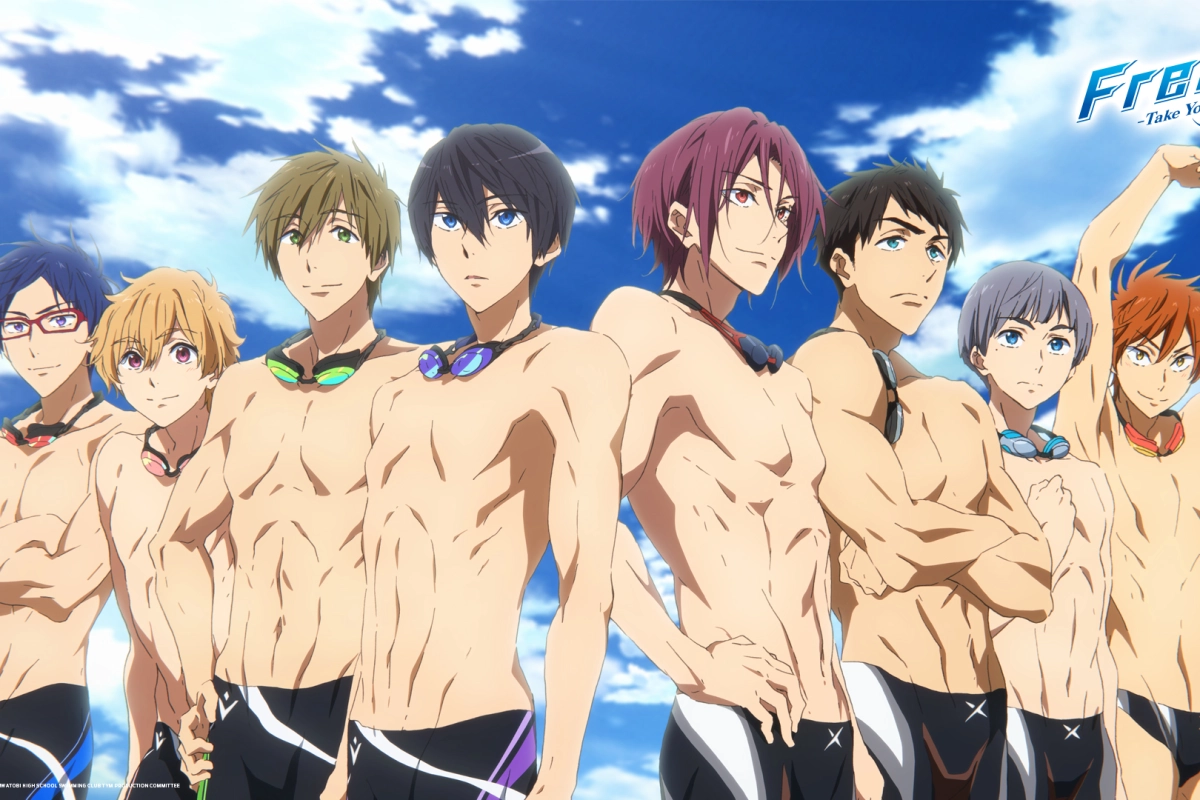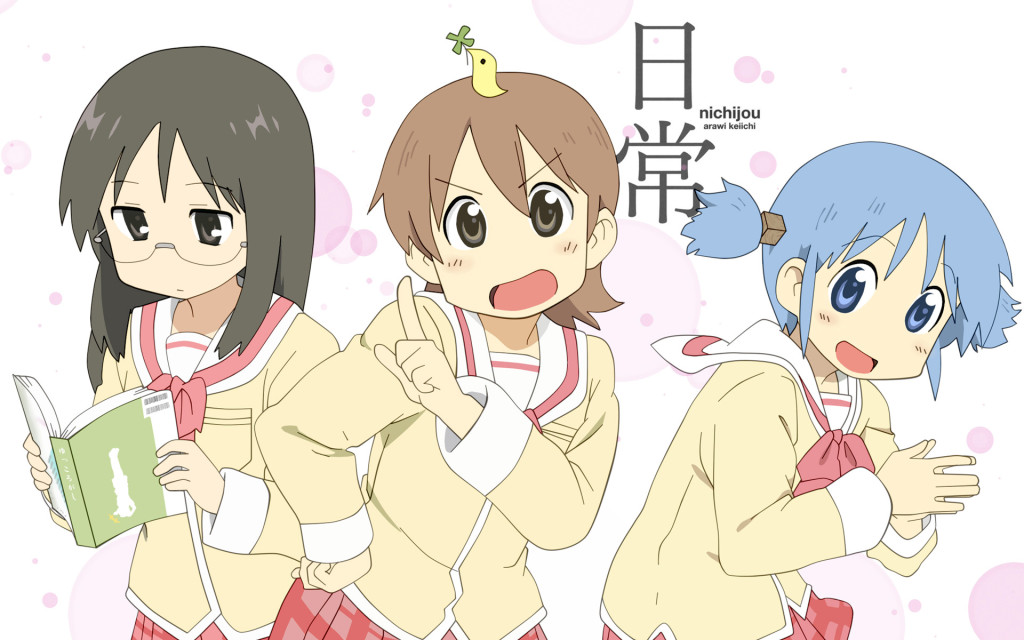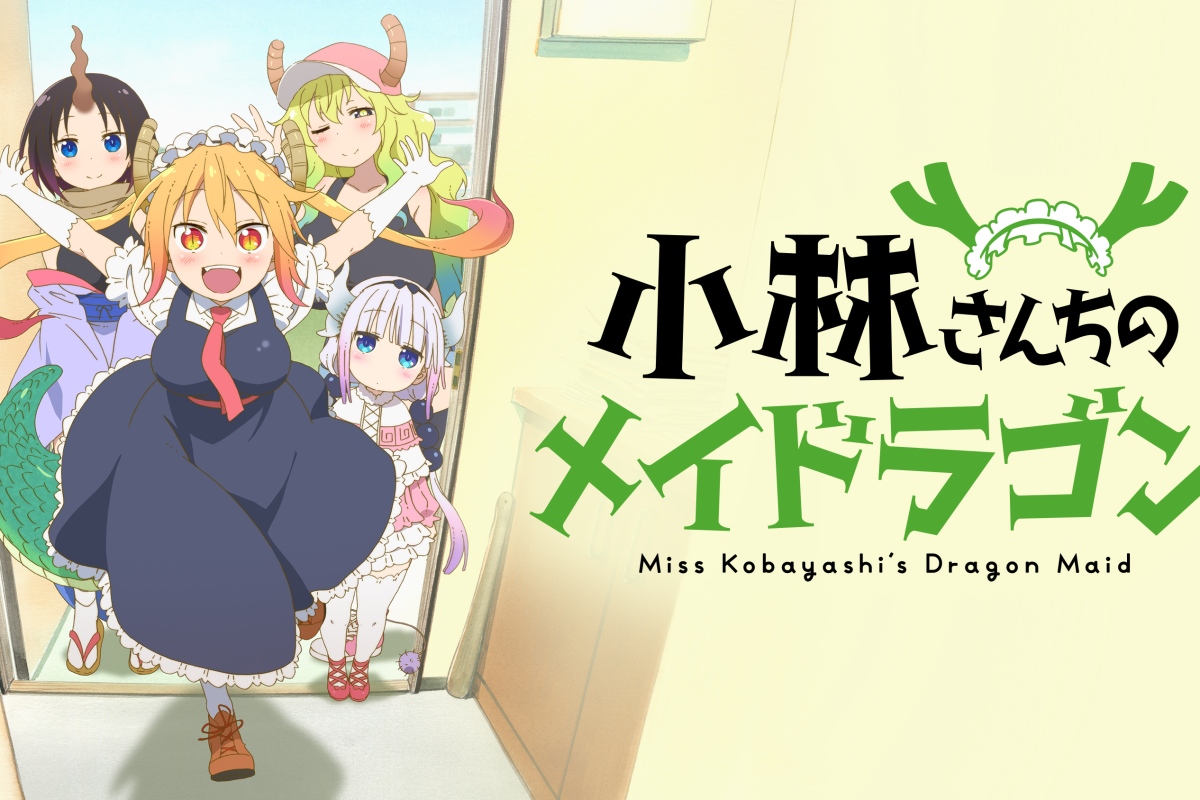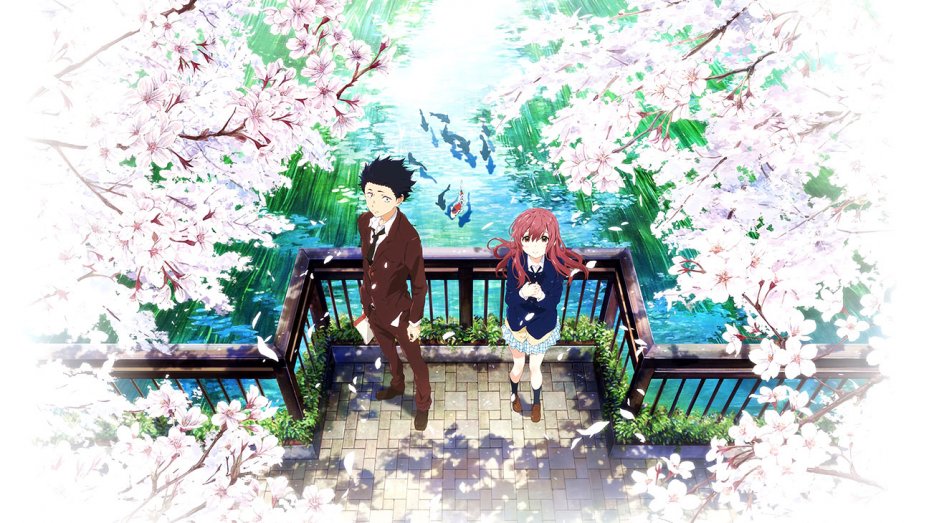Beyond the Boundary (known also as Kyoukai no Kanata) marks the fourth show since Kyoto Animation began treading its own path with Love, Chunibyo, and Other Delusions. Despite me having become a fan of KyoAni by the time this show came out, I wasn’t really as much of a fan to know what the studio was actually putting out.
So when I suddenly discovered the night of my birthday, October 2013, this brand new show being animated by Kyoto Animation, I watched the first 3 episodes that night. And then I stayed with the show all the way to the end. I remember enjoying it a lot, and that feeling of enjoyment stuck with me when Sentai Filmworks brought out the Premium Edition box for the show here in the US – which I went for.
Despite that, I never thought much or said much about this show since then, beyond simply saying “I liked it a lot”. Since I’ve recently been going through a lot of shows I enjoyed in my formative years as an anime fan, I figured I may as well return to this one as well.
(Edit: added a paragraph towards the end of the Plot and Characters section, wanted to make sure I hit all the show’s points clearly.)
An Introduction
While walking home one day, young Akihito Kanbara happens to look up and see a girl, standing on the edge of a school building, about to fall. A split second later, and he decides someone has to do something about this. And so up he runs onto the roof to try to talk her down.
This girl isn’t just some ordinary girl, though… which Akihito soon discovers, as her blood manifests into a sword and stabs him in the chest. Her name is Mirai Kuriyama, and she’s a Spirit World Warrior. But not just any; she’s the last of her clan, a clan with blood powers. Spirit World Warriors have one main goal: to exterminate “yomu”, magical monsters that cause havoc but can’t be seen by regular humans.
Akihito, our protagonist, is one such yomu… actually, a half-yomu to be precise. An extremely rare case indeed. But his yomu half grants him the power of immortality. So that blood-sword stab? It hurts, but it’s not gonna do much.
But Akihito is often seen as an outsider, a monster, a freak due to his yomu half. He’s really not a yomu, but he’s not really a human either. Mirai, on the other side, is seen as an outsider, a monster, a freak due to her unusual blood powers, which no other (alive) Spirit World Warriors possess.
And so with that single blow with fatal intentions, the two outsiders begin to forge a bond…
The Plot and Characters
It fascinated me, rewatching this show, going from “why did I even like this so much?” in the beginning to becoming enamored with it all over again towards the end.
I think I’ve talked about it before in my Nagi no Asukara review, but I’ve had times where I’ve finished a show feeling happy or satisfied, and those positive feelings will still be associated with the show as the years go on. It even lead up to the point where I got the premium edition Blu-Ray box for both of them. But when I came back to both of these shows, I wasn’t nearly as floored as I was the first time around.
Still both worth the premium box purchase though.
Beyond the Boundary sets up an interesting world, and even though today this setting is far from unique, it felt a bit newer back in 2013. (“Back in 2013″… I can’t believe I just said that.) Living secretly among us humans are these monstrous apparitions called “yomu” that feed off the despair of the people around them, and can only be seen by special people, here called Spirit World Warriors. A lot of these warriors are organized under various clans, such as the Nase clan, Inami clan, and Kuriyama clan, and these clans each exert control over all warriors in their respective area. At the same time, there exists a central Society of Spirit World Warriors which seems to operate all over Japan.
Here, through the eyes of Akihito, we see his unique experiences with one such clan, the Nase family. His closest friends are Mitsuki and Hiroomi Nase, the youngest of the Nases – and thus due to their age, they’re kept in the dark to all the inner workings of the family, even though they both so strongly want to prove themselves. Sitting as one of the heads of the clan is their older sister, Izumi, who, like the other clan leaders, shares very little with her siblings and is instead fine with being distant and cold. While the Nase siblings (and others) are all pretty definitively in the “secondary character” box, they do their role well as a supporting cast – although it would’ve benefitted the show greatly to have Izumi appear more often earlier on in the show.
Unfortunately, while something like Madoka Magica takes this idea of secret magical warriors and brings it to its logical conclusion, Beyond the Boundary is content with not going any further with its worldbuilding. Its casual approach to establishing how this world operates and showing the relationships between the secondary characters end up hampering it even when the biggest secrets and plot twists come to light in the final third of the show.
Spirit World Warriors can turn in the remains of yomu they defeat for profit, but what value these stones even have is left unanswered. The role of the Society of Spirit World Warriors is left a mystery, as is the actual relationship between the clans and this Society. Add onto this that the one character in the show said to represent said society, Miroku, may not actually represent them at all. Most egregiously, Miroku is never given a true motivation for his actions, even though the show builds him up as an antagonist from about episode 4.
Instead, the focus all comes down to the main pair: Akihito and Mirai. Pretty much everything that happens in this show, at some point, leads back to them. Akihito and Mirai are both oddballs, the weird special edge cases, that breaks the other characters’ conception of the world, so on some level, the attention they receive and the amount of conversation that centers on them does make sense. At the very least, Beyond the Boundary is clear on its intentions: these two are the ones we’re gonna talk about here, so if you’re not down for that, then get off the ride. But at the same time, the world here all centers around them, so we never get to see what the world is like outside these two; thus, the worldbuilding issues above.
To be fair to the show, though, they build up the relationship between the main pair surprisingly well. It’s not to say that how they wrote the romance between Akihito and Mirai is something that should be showcased as a prime example moving forward, but it’s a competent job that seeks to be different in a genre filled with clichés and repeated storylines. We get to see them explore a lot about each other (by actually physically confronting specters from each other’s pasts, a nice way to do show-don’t-tell), and they grow from a mutual dislike and “putting up” with each other, to a more compassionate friendship, and then to something deeper after that.
There’s another unusual sight, in which they’re able to build up this romance while also putting out your standard jokes about fetishes to the degree they have, and they still grow old just as quickly as they do in other shows. Akihito is all about glasses and “bespectacled beauties” (and, of course, Mirai wears glasses) while Hiroomi openly admits to a “sister complex”, to his younger sister Mitsuki’s chagrin. This show cannot go 10 minutes without mentioning one of these fetishes, and it gets tired fast. You early on get the feeling the fetishes were added in to check off that “personality quirk” box for these characters, but then they double down on it.
This high amount of focus on fetishes is most evident in episode 6, which – while being a fanservice-y filler episode – is arguably more popular than the rest of the show.
Beyond the romance, though, Beyond the Boundary is also a drama-focused show, with a bit more of a mysterious and darker atmosphere. There’s a lot of mystery and speculation – there’s always something going on, and always a secret not being told – although I’d argue this show has a bit of a problem with keeping everything a bit too close to its chest until episode 9. Episode 6 is a blatant open excuse to get the characters to dance around for a bit, but it’s also one of the rare times we get a break from all the action and deeper thinking and drama. This show’s plot never slows down otherwise.
At the end of the day, Beyond the Boundary is a fun watch, a good balance of drama and romance, all surrounding our main couple. It does keep all its mysterious stuff, well, a mystery, for quite a while – expecting you to just “roll with it” until then – but there’s still enough intrigue, action, and budding romance here to keep you watching. And then, it all pays off well in the final episodes.
The Atmosphere
As yet another show that was animated by Kyoto Animation, you probably know what my thoughts are about them by this point. They’re good at what they do.
Beyond the Boundary relies on darker colors than you see in most of the studio’s other works. A lot of purples, blacks, dark reds, a lot of night scenes… a loooot of night scenes. It’s a darker tone that matches the more serious dramatic feel the show is going for. The animation is really well done, as you’d expect with KyoAni, with the characters staying fluid throughout the entire show. In the years since they made Munto, they’ve improved a lot on action scenes, and it really shows here. The action is interesting to watch, fluid, and paced better. Throughout every scene – action, sad, or anything else – Kyoto Animation continues to shine when it comes to character expressions as well.
The overall designs of these characters are pretty good here too, which each one being distinct. As you’d expect, Mirai’s is the most memorable design in the show. But Ayaka and Ai, the yomu stone appraisers, are both stand out designs as well.
Yet another good thing on display here is the show’s background music, although it doesn’t stand out nearly as well as the visuals. There’s a lot of bells and symphony, to give that “magic” feel (as you’d hear in, say, Harry Potter) with choruses used to deliver the main melodies. It all stands out as unique and distinctive to this show, and also thoroughly cohesive thematically from start to finish, but doesn’t stand out enough to really be worth listening to on its own.
The opening theme, also named Kyokai no Kanata (sung by Minori Chihara), is pretty good, but probably not what I’d want to listen to a lot on my own. But it goes along with an opening animation which I actually really love because (minus the random sequence of clips in the second half of the opening) it shows Mirai coming into town for the first time – thus, kind of a prequel of the events of the show itself. It’s a small thing (it’s not like anything that exciting happens), but it’s a thing I like regardless.
The ending theme, Daisy by Stereo Dive Foundation, is absolutely amazing. I’ve put that song into my usual rotation of songs, I love it so much. The ending animation is flashy with colors and quick cuts and what-not; I like it a lot, even if it doesn’t have much substance to it.
Finally, we arrive to the voice acting. The English and Japanese voice acting are both at comparable quality here. Specifically, this quality is “oh, is that really how Mirai sounds like? That’s the voice they chose for him? Okay…” but by the end of the first episode, you’ve already gotten used to it. Mirai sounds squeaky on both sides (voiced by Risa Taneda in Japanese, and Krystal LaPorte in English), but after some reflection, I’m not sure if I’d have it any other way; it reflects Mirai’s inexperience and lack of assertiveness, but she begins to sound stronger and more sure of herself in both languages the further the show progresses. I’m impressed with how Sentai’s writers were able to translate over the various characters’ mannerisms and catch phrases (such as Mirai’s “Fuyukai desu” into “How unpleasant”). So my suggestion is, choose whatever side you want (sub or dub), and stick with it. You’ll do fine either way.
Final Remarks / TL;DR
Coming back to Beyond the Boundary, I found myself liking it almost as much as I did the first time around. What the story lacks in worldbuilding and handling its antagonists, it makes up for with its romance elements and good visual and audio production. It’s a darker, more dramatic story than Kyoto Animation had animated in a while, and I think they did pretty well. There’s only so much you can do in 12 episodes.
If you’re into drama or magical action-y stuff mixed with drama, I’d say give this show a try, and see how you feel after a few episodes. If you’re a romance fan, however, I’d give this a pretty solid recommendation. Those last few episodes will really make you fall for the main two.
Lastly, give me a few moments to talk about the home releases here in the US, as there’s two versions: the standard edition and limited edition. They’re both essentially the same in terms of content, except the limited edition comes with the Episode 0 OVA (along with some small physical goodies). If you find yourself liking Beyond the Boundary, I’d suggest going for the limited edition, if possible, for access to that OVA. It’s some extra fun times for fans of the series. If you’re on the fence about the show, you can find it online at Crunchyroll and Hi-Dive. (In fact, Hi-Dive also has the Episode 0 OVA on there too!) Both come with the Idol Trial mini-series too, which is… meh.
Rating: Great
Recommendation: Watch It
+++ romance between Mirai and Akihito, ending theme (Daisy), interesting world/story
— lack of worldbuilding/antagonist motivations, bit too much fetish jokes, voice acting takes a bit to adjust to






